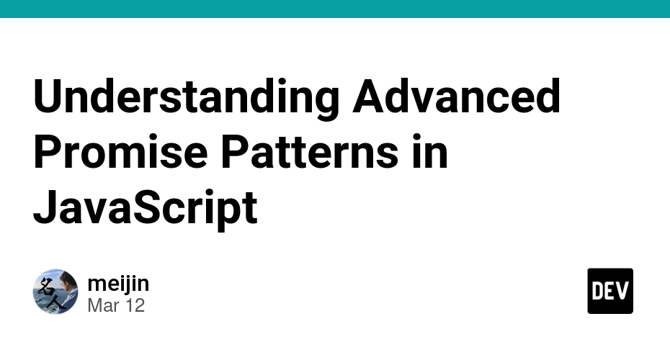Dev
1M
297

Image Credit: Dev
Understanding Advanced Promise Patterns in JavaScript
- This article delves into advanced Promise patterns in JavaScript, aiming to clarify commonly misunderstood concepts.
- Understanding the lifecycle of Promise states, including pending, fulfilled, and rejected, is essential.
- The execution order in Promises can be confusing, with Promise handlers always running asynchronously.
- The 'await' keyword transforms asynchronous code to appear synchronous, crucial for proper code execution.
- Comparing Promise chaining and 'await' for sequential asynchronous operations highlights readability differences.
- Error handling with try-catch vs .catch() in Promises reveals nuances, impacting multiple asynchronous operations.
- Using try-catch without 'await' may result in unhandled Promise rejections, necessitating proper error handling approaches.
- The Promise resolution pattern helps gracefully handle success and failure scenarios in applications, ensuring robustness.
- Creating functions that return Promises is fundamental for manipulating API results and maintaining clean asynchronous code.
- Robust error handling patterns, such as specific error handling, message transformation, and fallbacks, are crucial in production applications.
Read Full Article
17 Likes
For uninterrupted reading, download the app